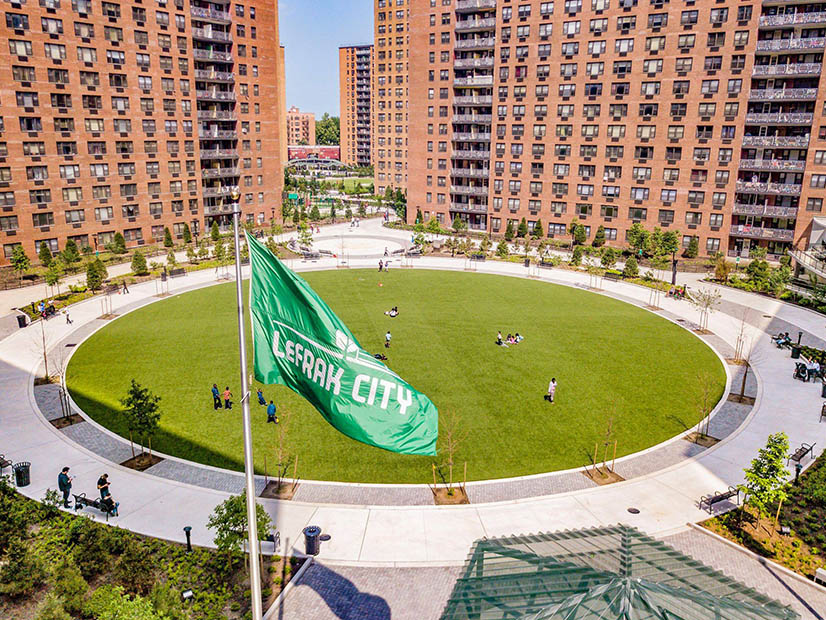
A superblock of commercial and residential buildings in New York City helped engineers demonstrate the benefit of combining an electric chiller and thermal networks for decarbonization, according to Jared Rodriguez, principal of Emergent Urban Concepts.
LeFrak City, a 4,605-apartment development with four commercial properties, was a prime location for testing electrification and thermal energy networks, Rodriguez said during a webinar on Thursday.
The superblock also has complete control over its infrastructure and the land underneath it, making the buildings a good case study before New York City’s Local Law 97 deadlines, he said.
The webinar, hosted by the Northeast Sustainable Energy Association as part of its BuildingEnergy NYC Conference, explored the implications of Local Law 97.
Under the law, buildings over 25,000 square feet, with some exceptions, must meet new energy efficiency and greenhouse gas emissions limits by 2024, with stricter limits coming into effect in 2030.
The law also covers two or more buildings on the same tax lot that together exceed 50,000 square feet, and two or more buildings owned by any condo association that are governed by the same board of managers that together exceed 50,000 square feet.
The goal of the law is to reduce emissions of the city’s largest buildings 40% by 2030 and 80% by 2050.
Thermal Networks
“We are losing a lot of heat through common practices,” such as venting heat out the top of a building, Rodriguez said
Large buildings can layer in new technology, such as air- or ground-source heat pumps when renewing equipment or improving current infrastructure to capture those heat sources, he said. Eventually, buildings like the ones at LeFrak City can achieve ambient temperature distribution.
Thermal flows into and out of a building site can grow and link up over time from a district level to a regional level and even use steam in the ground, Rodriguez said.
When flooding from Hurrican Ida damaged boilers in LeFrak City’s cellars, workers created an ad hoc thermal system that connected functioning boiler rooms with non-functioning boiler rooms to keep service going for residents.
Rodriguez and James Henshaw, a senior energy engineer with Bright Power, analyzed different permanent solutions for LeFrak City, including a variable refrigerant flow heat pump and a combination system of geothermal and supplemental heating and cooling.
Their analysis found that using both an electric chiller and thermal storage system reduced carbon emissions from 3,420 tons of carbon dioxide equivalent (CO2e) annually to 2,058 tons of CO2e. The combined technologies put the lifecycle cost at $25 million, which is lower than the $30 million lifecycle cost of the current energy system.


